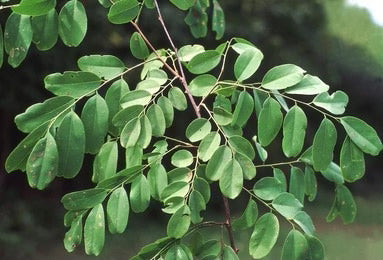Ayurvedic medicine is a comprehensive approach that has a tendency to treat a wide range of illnesses. Its major objective is to extend life through the use of natural means. Ayurveda offers information on how to cure illnesses or eliminate them from the inside out. In order to provide for optimal healthy well-being, Ayurveda divides the various constitutions (which are made up of the five elements of space, air, fire, water, and earth) into three separate doshas (Vata, pitta, and Kapha). This aids the body in preserving mental and emotional stability. As the name suggests, Ayurveda aids in the rejuvenation of the body and lengthening of life. Ayurvedic medicine uses a variety of natural treatments such as panchakarma, oils, and herbal medicines to promote health. According to Ayurveda, people are a part of nature. The body can be treated with a variety of methods that aid in restoring its balance, but one particularly auspicious plant known as Goraksh also aids in the body's renewal and the elimination of excess dosha. Let's talk about the usage and advantages of the plant goraksh.
General Information
The herb known as goraksh comes from the Fabaceae family's Dalbergia lanceolaria, a deciduous tree. The leaves, fruits, roots, bark, and seeds of this lovely tree are also gathered. The common uses of this herb include the treatment of pain, obesity, dyspepsia, leprosy, and diarrhea. This herb is known as goraksh in Sanskrit, which translates as "who protects the senses," gaurakh in Hindi, takoli in Telugu, errpachari in Kannada, belag in Malayalam, and bithuka in Orissa.
Special Note About Goraksh
- Acharya Priya Vrat Sharma, who has written numerous books after researching herbs and formulations, explains this herb. He imparts to us extremely sensitive information about the many kinds of herbs.
- It blooms between the months of April and May.
- It produces fruit between September and January.
- The root of this herb contains the chemical Lanciolarin in substantial form, and the bark contains 14–15% tannins.
- This herb, also known as the Kapha-Vata shamak, has the properties of being an analgesic, anti-diarrheal, and anti-inflammatory.
Systemic Classification
Botanical Name - Dalbergia Lanceolaria
Family - Leguminosae
Genus - Dalbergia
Species - D. lanceolaria
Habitat
- This tree may grow up to 7 feet in length and is strong and tall.
- This plant has clustered, 15 cm long leaves that are oblong or oval in shape and have nine to fifteen tiny, rounded, emarginate leaflets. The lowest portion of the leaves has a few hairy growths and roughly 12 small veins. On the other hand, a leaf grows on both sides while it is young.
- This tree bears flowers, and when they are in bloom, they make a pretty sight. Its clustered, pinkish flowers have a faint bluish tinge and are found in clumps. They range in length from 3 to 5 inches.
- It has a bean growth that is 2 to 4 inches long and narrow on both sides.
- Because it contains unctuous, yellowish brown-colored bark with one to three seeds at a time and no liquid content, this is known as solid bark.
- This plant is ubiquitous across India, especially in areas near hills, valleys, or ponds, although it is not common in the United States.
Ayurvedic Properties
|
Particular |
Hindi / Sanskrit |
English |
|
Rasa (Taste) |
Katu, Tikta, Kashaya |
Pungent, Bitter, Astringent |
|
Guna (Physical Property) |
Laghu |
Light |
|
Virya (Potency) |
Ushna |
Hot |
|
Vipaka (Post-Digestive Taste) |
Katu |
Pungent |
Effects On Doshas
- Its ushna veerya balances the Vata and Kapha doshas.
- Its oil is utilized as an analgesic and anti-inflammatory.
Practical Uses
- Due to its ushna veerya, this herb balances the Vata and Kapha doshas.
- This plant helps to calm the vata dosha, helps to increase fire and digestion, and helps to reduce discomfort.
- It has anti-inflammatory properties and promotes healing.
- This encourages a healthy body build and increases strength.
- Osteoarthritis and rheumatoid arthritis are both treated with its seed oil.
- Its leaves are applied to painful places after being heated on a pan.
- This helps treat constipation and is used to reduce fire.
- This is utilized to eliminate waste products from the body, such as poisons or irritated doshas, as well as in cases of weakness and exhaustion.
- This supports Aampachan and offers the body energy to repair and regenerate the necessary organs.
Part used
- Flowers
- Bark
- Fruits
- Leaves
- Roots
Dosage
Its powder is available in paste form and in powder form. It can be administered in decoction form in doses of 20 to 30 ml.

